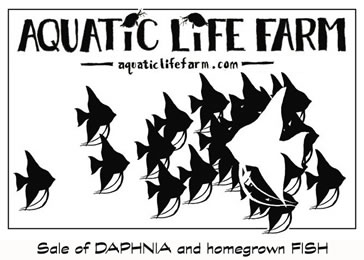Even if fish are from two different sources can be very closely related. Although it's an extreme example, for many, many years ALL of the yellow labs in the hobby were from a small group of wild fish. I'd blame the decline of "quality" of yellow labs more on poor breeding practices (i.e. breeding atypical fish, hybridization along the way, etc.) than on inherent problems from inbreeding.
And you're correct that poor husbandry and un-natural water (i.e. water different than native habitats) result in a lot of the deformities and abnormalities seen in aquarium bred fish (bent mouths, sex skewing, stunting, deformed backs, etc.)
There is risk involved in introducing "new blood" into a breeding line...and this risk needs to be weighed against the (in my opinion overblown) risk associated with inbreeding. That a fish - even a "wild" one - is what it's supposed to be can be highly uncertain. I only trust that (especially "wild") peacock females are properly identified when I see that their offspring look OK. Especially with commercially sourced fish, there are way too many hand-offs and opportunities for confusion between the source (lake) and the purchaser for there to be complete certainty. And that's assuming that "wild" fish are actually wild (i.e. from a locale in the wild).
(Some) New World fish are every bit as inherently genetically concentrated as rift lake species. It's the nature of cichlids and their adaption to rapidly evolve to their habitats.
The only widely available Australoheros (chanchito) in the hobby is A. n. sp. "Red Ceibal", which is only found in this little stream in Centurion, Uruguay.:
http://cichlaholic.com/uruguay_list.html#redceibal
It's a pretty fish, so it's been farmed...and widely sold...but all of the stock came from this one location... And the chanchitos from this spot in Centurion are slightly different than the ones in the pond down the way....because this small population of fish has (rapidly) adapated to the particular conditions in that stream. And the only "new blood" that could possibly arrive in the stream could (possibly) be from a big storm / flood...or from human intervention. Either of which would fundamentally change the nature of "Red Ceibal" chanchitos.
Even more extreme example, is the chanchito found in Canada El Sauce, which is a little pond where we collected in NE Uruguay. It is literally a pond, probably 1-2 acres in size...probably sourced by an underwater spring. The fish in it - chanchitos, gymnogeos, pikes, livebearers, etc. - probably found there way there (who knows when) after a flood...and then were isolated...and began to evolve to the conditions of THAT pond. The chanchitos there are DIFFERENT than any other place...including the chanchitos from the relatively close rivers and streams...and I'd assume highly inbred...
http://www.monsterfishkeepers.com/f...-Canada-El-Sauce-quot&highlight=Australoheros
Sorry to ramble

Matt
A lot depends where the fish is from and what type of fish.
When I bred mbuna many years ago... this was rarely an issue. With new world cichlids this is even less of an issue as they are more genetically diverse.
Water conditions can also be an issue with deformities.
I know with sand sifters from lake tang... their genetic make up is limited and diversity is a must. IME a lot of lake tang fish need diversity. I try with most groups I have to get them from at least two sources. Sometimes three or four if I am dealing with TR fish.


